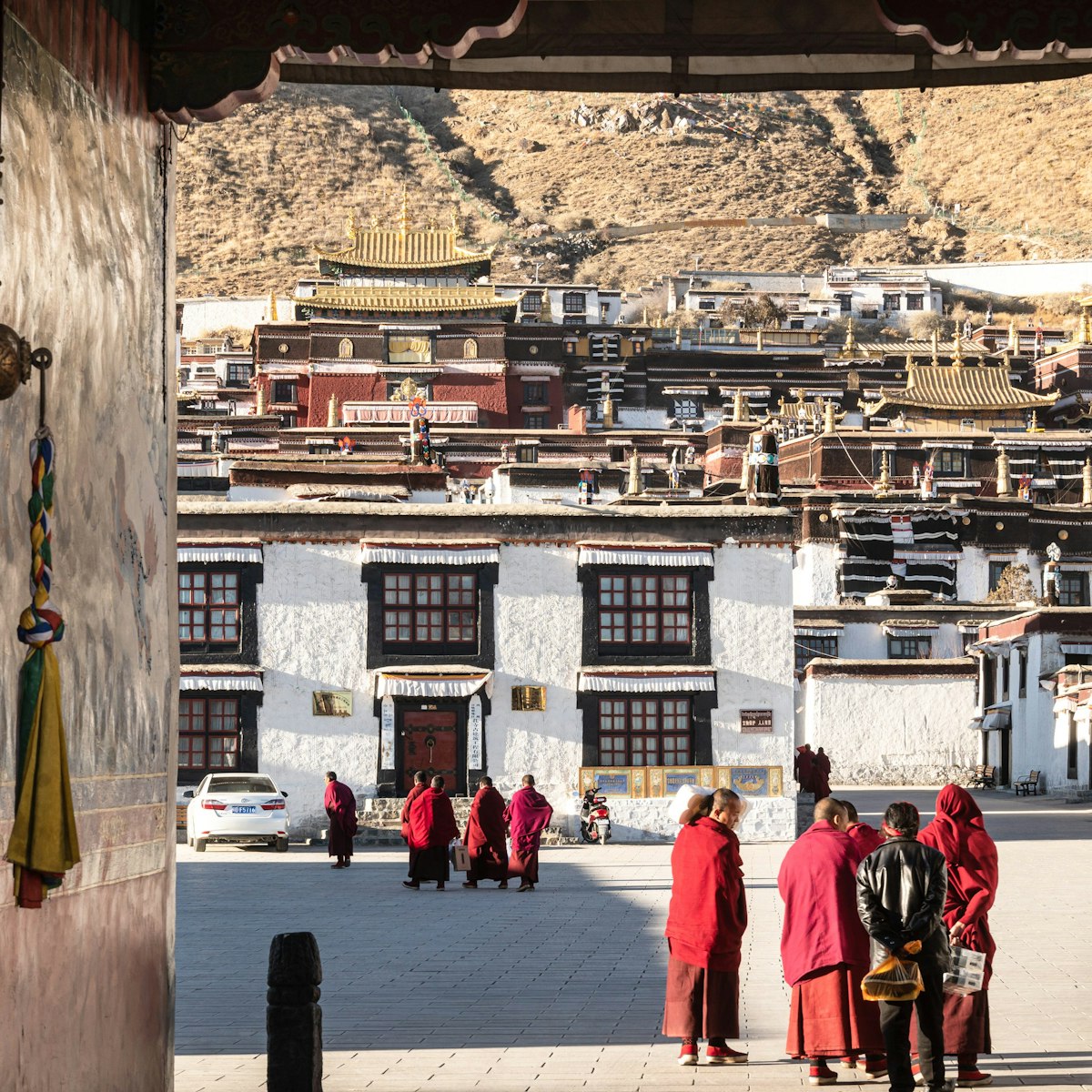It’s a treat for the traveller when a sight is both a pleasure to explore and of great artistic importance. Such is Shalu Monastery, which dates back to the 11th century. It's worth a visit for its fine murals and pilgrim crowd, though a ticket is somewhat pricey.
The monastery rose to prominence in the 14th century when its abbot, Büton Rinchen Drup, emerged as the foremost interpreter and compiler of Sanskrit Buddhist texts of the day. (A suborder, the Büton, formed around him.)
It also became a centre for training in skills such as trance walking and thumo (generating internal heat to survive in cold weather), feats made famous by the flying monks of Alexandra David-Neel’s book Magic and Mystery in Tibet.
In the abstract, the design of the monastery represents the paradise of Chenresig (Avalokiteshvara, the Bodhisattva of Compassion), a haven from all worldly suffering. In the concrete, Shalu is the only monastery in Tibet that combines Tibetan and Chinese styles in its design. Much of the original structure was destroyed by an earthquake in the 14th century and, as this was a time of Mongol patronage, many Han artisans were employed in the reconstruction. The green-tiled Chinese-style roof, clearly visible as you approach, is one of the monastery’s most easily recognisable features.
What remained of the original 11th-century Tibetan-style monastery was largely destroyed in the Cultural Revolution, but the Chinese-influenced inner Serkhang has survived reasonably well, as it was used as a storeroom and therefore spared. If you enjoy looking at murals, Shalu has some fine ones from the 14th century that fuse Chinese, Mongol and Newari styles. You'll want your phone light or a torch to see them in the darker halls.
The southern Kanjur Lhakhang has particularly lovely Newari-style murals depicting the five Dhyani Buddhas. The main inner Serkhang has a black stone statue of Chenresig Kasrapani, the monastery’s holiest relic, as well as a vase (in the right corner) from which pilgrims receive a blessing of sacred water. The northern Gusum Lhakhang, so named for its three doors, has more fine murals, including one in the left corner depicting the monastery’s founder. The walls lining the interior kora path hold some of the finest murals, so ask for a monk to open the gate if it is closed.
There are a couple of upper chapels, including the ancient-feeling Yum Lhakhang with its inner kora and other chapels with fine mandala murals. On the way out you can ask the ticket sellers to show you the sacred wood block which confers blessings on anyone who sees it. Monks sell block prints of the now-faded mandala.
Shalu Monastery is 4km off the Shigatse–Gyantse road. En route you can stop off at the 1000-year-old Gyengong Lhakhang, a small chapel that actually pre-dates Shalu. Don't miss the sacred mushroom growing on the ground-floor pillar and the upstairs stone basin where Sakya Pandita washed his head before receiving his gelong monastic vows. Pilgrims put their heads against the important image of protectress Palden Lhamo, while students hang pens from the cabinet to get a little extra help with their exam results.
From Shalu you can drive for 10 minutes up to Ri-puk Hermitage, a former meditation centre and summertime residence for Shalu's monks built around a sacred spring and destroyed chörten. There are lovely views of the Shalu Valley here. A two-day trek to Ngor Monastery starts from here.


